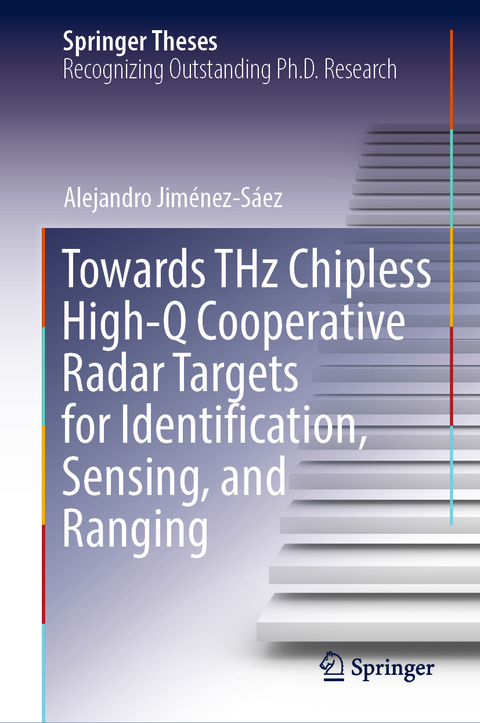
Towards THz Chipless High-Q Cooperative Radar Targets for Identification, Sensing, and Ranging
Springer International Publishing (Verlag)
978-3-031-04975-0 (ISBN)
This work systematically investigates the use of high-quality (high-Q) resonators as coding particles of chipless cooperative radar targets to overcome clutter. Due to their high-Q, the backscattered signature can outlast clutter and permit reliable readouts in dynamic environments as well as its integration in other types of cooperative radar targets for joint identification, sensing, and ranging capabilities.
This is first demonstrated with temperature and pressure sensors in the microwave frequency range, which include the characterization of a novel temperature sensor for machine tool monitoring up to 400 °C, as well as inside the machine. Afterwards, the thesis proposes and demonstrates the use of metallic as well as dielectric Electromagnetic BandGap (EBG) structures to enable the realization and to enhance the capabilities at mm-Wave and THz frequencies compared to microwave frequencies with compact monolithic multi-resonator cooperative radar targets. Furthermore, thiswork studies the integration of resonators as coding particles inside larger retroreflective configurations such as Luneburg lenses to achieve long-range and high accuracy for localization and, at the same time, frequency coding robust against clutter for identification. Finally, the successful readout of these cooperative radar targets is demonstrated in cluttered dynamic environments, as well as with readers based on Frequency-Modulated Continuous-Wave (FMCW) radars.
Alejandro Jimenez-Saez received the double master's degree (Hons.) in telecommunications engineering from the Polytechnic University of Valencia, Spain, and in electrical engineering from the Technische Universitat Darmstadt, Germany, in 2017. He received the Dr.-Ing. degree (summa cum laude) in electrical engineering from the TU Darmstadt in 2021, and the award to the best dissertation in Elektrotechnik und Informationstechnik at TU Darmstadt in 2021. He currently leads the Smart RF Systems based on Artificial and Functional Materials research group at the institute of microwave engineering and photonics, TU Darmstadt. His current research interests include chipless RFID, high-Q resonators, electromagnetic bandgap structures, liquid crystals, and reconfigurable intelligent surfaces at sub-mm and mm-wave frequencies.
Introduction.- High-Q Resonators for Chipless RFID and Sensing.- Wireless Sensing with Single Air-cladded High-Q Resonators.- Electromagnetic BandGap (EBG) high-Q Resonator Concepts.- High-RCS Wide-Angle Retroreflective Tags Towards THz 91.
| Erscheinungsdatum | 24.09.2022 |
|---|---|
| Reihe/Serie | Springer Theses |
| Zusatzinfo | XVI, 144 p. 89 illus., 85 illus. in color. |
| Verlagsort | Cham |
| Sprache | englisch |
| Maße | 155 x 235 mm |
| Gewicht | 411 g |
| Themenwelt | Naturwissenschaften ► Chemie ► Analytische Chemie |
| Technik ► Elektrotechnik / Energietechnik | |
| Technik ► Maschinenbau | |
| Technik ► Nachrichtentechnik | |
| Schlagworte | Backscattering • bed of nails • Ceramic 3D printing • Chipless RFID • Electromagnetic Bandgap • FMCW Radar • Frequency selective surface • Gap Waveguide • High-Q • High-Q Resonator • Luneburg Lens • Photonic Crystal • Radar Clutter • Reflective Structure • Reflective Surface • reflector • Retroreflector |
| ISBN-10 | 3-031-04975-6 / 3031049756 |
| ISBN-13 | 978-3-031-04975-0 / 9783031049750 |
| Zustand | Neuware |
| Haben Sie eine Frage zum Produkt? |
aus dem Bereich


